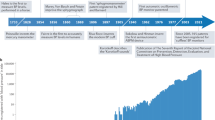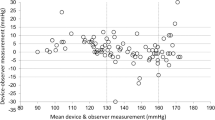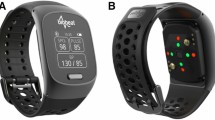Abstract
Oscillometric devices are being widely used for ambulatory, home and office blood pressure (BP) measurement, and several of them have been validated using established protocols. This cross-sectional study assessed the impact on antihypertensive treatment decisions of replacing the mercury sphygmomanometer by a validated oscillometric device. Consecutive subjects attending a hypertension clinic had triplicate simultaneous same-arm BP measurements using a mercury sphygmomanometer and a validated professional oscillometric device. For each device, uncontrolled hypertension was defined as average BP ⩾140/90 mm Hg (systolic/diastolic). A total of 5108 simultaneous BP measurements were obtained from 763 subjects in 1717 clinic visits. In 24% of all visits, the mercury and the oscillometric BP measurements led to different conclusion regarding the diagnosis of uncontrolled hypertension. In 4.9% of the visits, the diagnostic disagreement was considered as ‘clinically important’ (BP exceeding the diagnostic threshold by >5 mm Hg). These data suggest that the replacement of the mercury sphygmomanometer by a validated professional oscillometric device will result into different treatment decisions in about 5% of the cases. Therefore, and because of the known problems when using mercury devices and the auscultatory technique in clinical practise, the oscillometric devices are regarded as reliable alternatives to the mercury sphygmomanometer for office use.
This is a preview of subscription content, access via your institution
Access options
Subscribe to this journal
Receive 12 digital issues and online access to articles
$119.00 per year
only $9.92 per issue
Buy this article
- Purchase on Springer Link
- Instant access to full article PDF
Prices may be subject to local taxes which are calculated during checkout


Similar content being viewed by others
References
O'Brien E, Asmar R, Beilin L, Imai Y, Mallion JM, Mancia G et al. European Society of Hypertension recommendations for conventional, ambulatory and home blood pressure measurement. J Hypertens 2003; 21: 821–848.
Pickering TG, Hall JE, Appel LJ, Falkner BE, Graves J, Hill MN et al. Recommendations for blood pressure measurement in humans and experimental animals: part 1: blood pressure measurement in humans: a statement for professionals from the subcommittee of professional and public education of the American Heart Association Council on High Blood Pressure Research. Hypertension 2005; 45: 142–161.
Mercury in measuring devices (Amendment of Council Directive 76/769/EEC) Directive 2007/51/EC of the European Parliament and of the Council of 25 September 2007. http://ec.europa.eu/enterprise/chemicals/legislation/markrestr/amendments_en.htm. (Accessed 2 June 2010).
Graves JW, Tibor M, Murtagh B, Klein L, Sheps SG . The Accoson greenlight 300, the first non-automated mercury-free blood pressure measurement device to pass the International Protocol for blood pressure measuring devices in adults. Blood Press Monit 2004; 9: 13–17.
Stergiou GS, Giovas PP, Gkinos CP, Tzamouranis DG . Validation of the A&D UM-101 professional hybrid device for office blood pressure measurement according to the International Protocol. Blood Press Monit 2008; 13: 37–42.
Tasker F, De Greeff A, Shennan AH . Development and validation of a blinded hybrid device according to the European Hypertension Society protocol: Nissei DM-3000. J Hum Hypertens 2010; 24: 609–616.
Asmar R, Khabouth J, Mattar J, Pecchioli V, Germano G . Validation of three professional devices measuring office blood pressure according to three different methods: the Omron BP10, the Omron HBP T105 and the Pic Indolor Professional. J Hypertens 2010; 28: 452–458.
Omboni S, Riva I, Giglio A, Caldara G, Groppelli A, Parati G . Validation of the Omron M5-I, R5-I and HEM-907 automated blood pressure monitors in elderly individuals according to the International Protocol of the European Society of Hypertension. Blood Press Monit 2007; 12: 233–242.
Stergiou GS, Tzamouranis D, Protogerou A, Nasothimiou E, Kapralos C . Validation of the Microlife watch BP office professional device for office blood pressure measurement according to the International Protocol. Blood Press Monit 2008; 13: 299–303.
dabl Educational Trust. Devices for blood pressure measurement. http://www.dableducational.org. (Accessed 2 June 2010).
Parati G, Stergiou GS, Asmar R, Bilo G, de Leeuw P, Imai Y, et al. European Society of Hypertension guidelines for blood pressure monitoring at home: a summary report of the Second International Consensus Conference on Home Blood Pressure Monitoring. J Hypertens 2008; 26: 1505–1526.
Pickering TG . What will replace the mercury sphygmomanometer? Blood Press Monit 2003; 8: 23–25.
Stergiou GS . How to cope with unreliable office blood pressure measurement? Am J Hypertens 2005; 18: 1519–1521.
Pickering TG . Should doctors still measure blood pressure? J Clin Hypertens 2006; 8: 394–396.
Pickering TG, Gerin W, Schwartz JE, Spruill TM, Davidson KW . Franz Volhard lecture: should doctors still measure blood pressure? The missing patients with masked hypertension. J Hypertens 2008; 26: 2259–2267.
Myers MG, Godwin M . Automated measurement of blood pressure in routine clinical practice. J Clin Hypertens 2007; 9: 267–270.
Stergiou GS . Office blood pressure measurement with electronic devices: has the time come? Am J Hypertens 2008; 21: 246.
Scientific Committee on Emerging and Newly Identified Health Risks (SCENIHR). Mercury sphygmomanometers in healthcare and the feasibility of alternatives. European commission, directorate general for ‘health and consumers’. http://ec.europa.eu/health/ph_risk/committees/04_scenihr/scenihr_opinions_en.htm#2. (Accessed 2 June 2010).
Wright JM, Mattu GS, Perry Jr TL, Gelferc ME, Strange KD, Zorn A et al. Validation of a new algorithm for the BPM-100 electronic oscillometric office blood pressure monitor. Blood Press Monit 2001; 6: 161–165.
Mattu GS, Heran BS, Wright JM . Overall accuracy of the BpTRU—an automated electronic blood pressure device. Blood Press Monit 2004; 9: 47–52.
O'Brien E, Petrie J, Littler W, de Swiet M, Padfield PL, O'Malley K et al. The British Hypertension Society protocol for the evaluation of automated and semi-automated blood pressure measuring devices with special reference to ambulatory systems. J Hypertens 1990; 8: 607–619.
Stergiou GS, Lourida P, Tzamouranis D, Baibas NM . Unreliable oscillometric blood pressure measurement: prevalence, repeatability and characteristics of the phenomenon. J Hum Hypertens 2009; 23: 794–800.
Hansson L, Zanchetti A, Carruthers SG, Dahlöf B, Elmfeldt D, Julius S et al. Effects of intensive blood-pressure lowering and low-dose aspirin in patients with hypertension: principal results of the Hypertension Optimal Treatment (HOT) randomised trial. HOT Study Group. Lancet 1998; 351: 1755–1762.
Julius S, Kjeldsen SE, Weber M, Brunner HR, Ekman S, Hansson L et al. Outcomes in hypertensive patients at high cardiovascular risk treated with regimens based on valsartan or amlodipine: the VALUE trial. Lancet 2004; 363: 2022–2031.
Dahlöf B, Sever PS, Poulter NR, Wedel H, Beevers DG, Caulfield M et al. Prevention of cardiovascular events with an antihypertensive regimen of amlodipine adding perindopril as required versus atenolol adding bendroflumethiazide as required, in the Anglo-Scandinavian Cardiac Outcomes Trial-Blood Pressure Lowering Arm (ASCOT-BPLA). Lancet 2005; 366: 895–906.
Yusuf S, Teo KK, Pogue J, Dyal L, Copland I, Schumacher H et al. Telmisartan, ramipril, or both in patients at high risk for vascular events. N Engl J Med 2008; 358: 1547–1559.
Lithell H, Berglund L . Validation of an oscillometric blood pressure measuring device: a substudy of the HOT Study. Hypertension optimal treatment. Blood Press 1998; 7: 149–152.
O'Brien E, Atkins N, Stergiou G, Karpettas N, Parati G, Asmar R et al. European Society of Hypertension International Protocol revision 2010 for the validation of blood pressure measuring devices in adults. Blood Press Monit 2010; 15: 23–38.
Ostchega Y, Nwankwo T, Sorlie PD, Wolz M, Zipf G . Assessing the validity of the Omron HEM-907XL oscillometric blood pressure measurement device in a national survey environment. J Clin Hypertens 2010; 12: 22–28.
Acknowledgements
This study was supported by the Hypertension Center, Third University Department of Medicine, Sotiria Hospital, Athens, Greece.
Author information
Authors and Affiliations
Corresponding author
Ethics declarations
Competing interests
The authors declare no conflict of interest.
Additional information
This study has been presented at the 20th European Society of Hypertension Meeting in Oslo, 2010.
Rights and permissions
About this article
Cite this article
Stergiou, G., Lourida, P. & Tzamouranis, D. Replacing the mercury manometer with an oscillometric device in a hypertension clinic: implications for clinical decision making. J Hum Hypertens 25, 692–698 (2011). https://doi.org/10.1038/jhh.2010.107
Received:
Revised:
Accepted:
Published:
Issue Date:
DOI: https://doi.org/10.1038/jhh.2010.107
Keywords
This article is cited by
-
Automated ‘oscillometric’ blood pressure measuring devices: how they work and what they measure
Journal of Human Hypertension (2022)
-
The Japanese Society of Hypertension Guidelines for the Management of Hypertension (JSH 2019)
Hypertension Research (2019)
-
From mercury sphygmomanometer to electric device on blood pressure measurement: correspondence of Minamata Convention on Mercury
Hypertension Research (2016)
-
Blutdruckregulation und Nephropathie
Der Diabetologe (2013)



